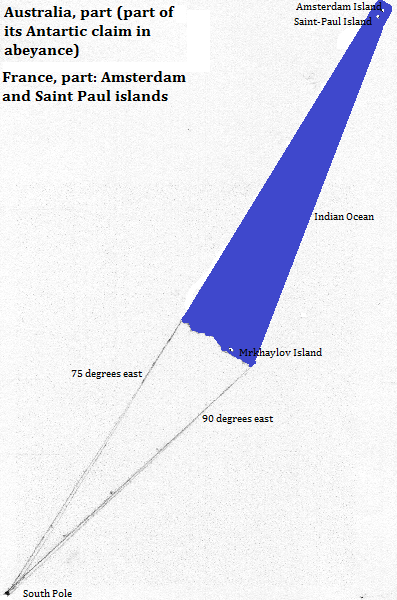
The pattern here is like much of Greater Antarctia: a high ice-covered plateau terminating in coastal mountains that overlook ice shelves. Beyond those is sea ice, whose extent and density varies seasonally.
The exceptions to the pattern are minor: the shore dips inland toward the 75th parallel as Prydz Bay; the Grove Mountains are found far from the land's end; and some small islands are embedded in the ice shelf--most notably Mrkhaylov.
Also included are two volcanic islands in the Indian Ocean: Amsterdam and Saint-Paul.

There are three equal-sized, permanent research bases: Australian, Chinese and Russian. Judging by their administrators, the languages used are likely to be English, Putonghua Chinese and Russian, and the religions (or religious ancestry) Protestant Christian; a syncretic blend of Buddhism, Confucianism, Taoism and Chinese folk ways; and Russian Orthodox Christianity. The majorities, then, would be Indo-European languages and Christian religious backgrounds.
Saint-Paul Island is uninhabited; there is a research station on Amsterdam Island. Since it is French administered the language used would be French and the most likely religious background would be Roman Catholic Christian.
No-one even visited Greater Antarctica before the late 19th century. Amsterdam Island was discovered in the 16th century. Saint-Paul was discovered in the 16th but not visited before the 18th.